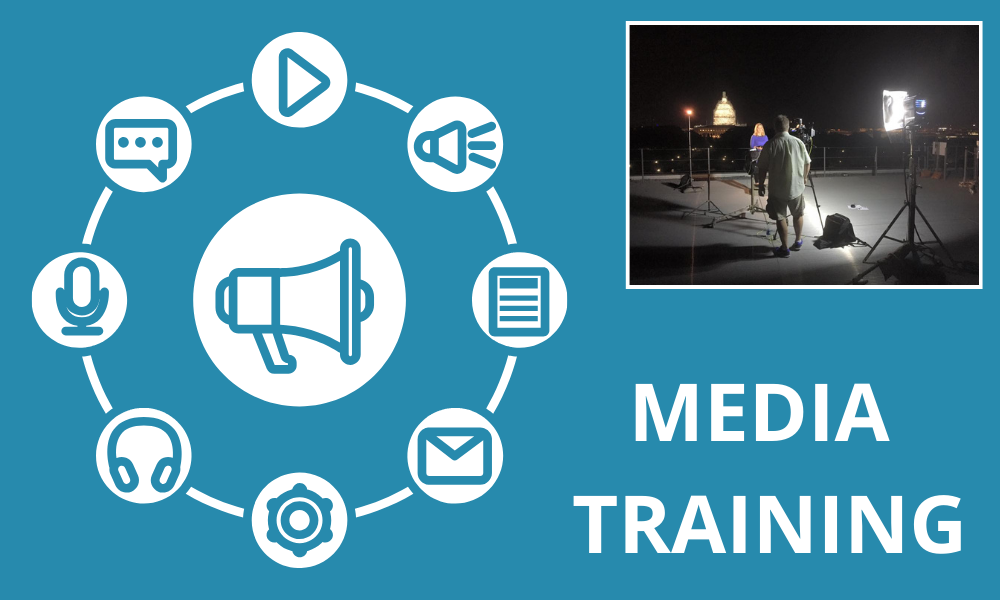Media relations can be a powerful tool in shaping public opinion, influencing legislative and regulatory bodies, and communicating complex ideas in a way that benefits both the public and your institution. At Virginia Tech, effective media communication is essential for delivering a consistent message that cuts through the noise. But for many, the prospect of a media interview can be intimidating. This guide provides practical tips and strategies to help you navigate various types of media interviews with confidence and clarity.
The Value of Media Relations
Engaging with the media is not just about promoting your work—it’s about contributing to the public discourse with research-based knowledge. By effectively communicating your message, you can help the public make sense of our complex world, while also advancing Virginia Tech’s mission of delivering consistent and coherent messages. This not only enhances the university’s reputation but also ensures that your voice is heard amidst a sea of competing narratives.
Why Media Interviews Can Be Intimidating
Media interviews can feel daunting for several reasons:
- Fear of Negative Perception: The concern of being perceived unfavorably can be overwhelming.
- Nervousness Around Cameras and Microphones: Speaking on camera or into a microphone can make anyone anxious.
- Mistrust of the Press: Past experiences or misconceptions about the media can lead to distrust.
- Lack of Preparation: Insufficient time to prepare can add to the stress.
- Fear of Difficult Questions: Anticipating tough or unexpected questions can create anxiety.
Different Types of Media Interviews
Understanding the type of interview you’re facing can help you better prepare:
- Printed Publication: Includes newspapers, magazines, and specialty publications.
- Web Publication: Covers online content, news websites, and social media platforms.
- Radio Broadcast: Involves radio news stations, webcasts, and podcasts.
- Television Broadcast: Ranges from TV newscasts to on-camera interviews, whether in person or via Skype.
Tips for Various Interview Formats
Phone Interviews:
- Advantages: You can have your notes in front of you.
- Preparation: Choose a quiet place, preferably using a landline. Know if the interview is being recorded, and avoid using speakerphone.
- Best Practice: Decline on-the-spot interviews if possible, to allow time for preparation.
On-Camera, Face-to-Face Interviews:
- Preparation: Know your key messages—no relying on notes.
- During the Interview: Treat it as a conversation, maintain eye contact with the reporter, and be aware of when the camera is recording.
- Environment: Choose a quiet location and consider using visual aids if appropriate.
On-Camera, Virtual Interviews:
- Setup: If possible, use a microphone such as a Yeti opposed to the one built into your laptop. Find a room that has sound absorption such as carpeting, and curtains opposed to one with hard surfaces that could distort audio. Another option: find a studio for rent at a local college, library or podcast booth at a co-working space.
- During the Interview: Use an earpiece to hear the reporter, and do a quality check before starting.
Key Preparation Strategies
- Know Your Subject: You’re the expert on your topic, so use that to your advantage.
- Develop Key Messages: Stick to the Rule of 3×3—three key points, repeated three times.
- Practice: Rehearse your messages until they come naturally.
- Be Succinct: Keep your responses brief and focused.
- Stay Positive and Confident: Your attitude will shape the perception of your message.
Establishing Ground Rules
Before the interview:
- Discuss the Questions: Understand the direction the interview will take.
- Clarify Procedures: Know when it’s appropriate to pause the interview or correct a statement.
- Never Say “No Comment”: This can imply guilt or evasion.
- Understand the Context: Remember that nothing is ever “off the record.”
Anticipating Questions
- Predictability: About 90% of questions can be anticipated. Prepare positive messages in advance.
- Tough Questions: Consider how you would respond to difficult inquiries.
- Avoid Speculation: Stick to what you know—never guess or share controversial opinions.
Tailoring Your Message
Consider your audience and tailor your remarks accordingly. Whether speaking to the general public or specific groups, your message should resonate with their interests and concerns.
Bridging Techniques
If a question leads the conversation off course, use bridging techniques to steer it back:
- “Actually…”
- “More importantly…”
- “What we’re focused on is…”
- “There’s something else to consider…”
These phrases can help you return to your key messages and keep the interview on track.
Delivering Your Message Simply
Think of your next-door neighbor—how would you explain your topic to them? Avoid jargon and use plain language. Create a narrative with a clear problem, benefit, and solution, and ensure your message is memorable and visual.
Practice Makes Perfect
Develop your message:
- Theme: What’s the key takeaway?
- Why Should People Care? Use facts, examples, and anecdotes.
- Solution: Address the audience’s concerns and explain what’s in it for them.
Prepare for difficult questions by listing potential inquiries and planning your responses.
Additional Considerations
- Reporter’s Questions: Be prepared for the reporter to ask if there’s anything else you’d like to add.
- Use Facts and Figures: Back up your statements with data when appropriate.
- Engage: Be genuine. Show excitement about your ideas, maintain eye contact, and keep an open, friendly demeanor.
Final Thoughts
Remember these three things:
- Problem: What issue are you addressing?
- Benefit: How does your solution help the listener? Make it relevant for them.
- Solution: What should be done next?
With these tips, you can approach media interviews with confidence, ensuring that your message is heard loud and clear.
Learn more about brand voice and how to build the foundation behind any media you utilize to get your message heard. My book, Brand Voice, Data + People Drive Results, guides you in the process of how to add the human element to your brand and connect with the very people you are meant to impact.
Tired of throwing marketing tactics like spaghetti at the wall?
Learn more about brand voice and the marketing strategy that drives business success.
